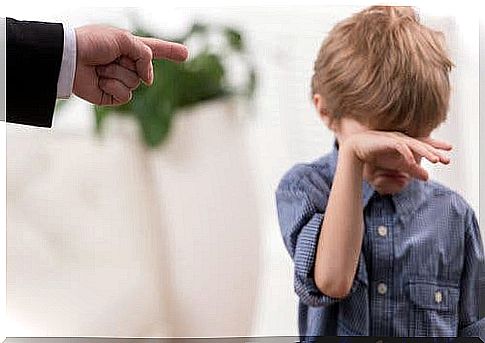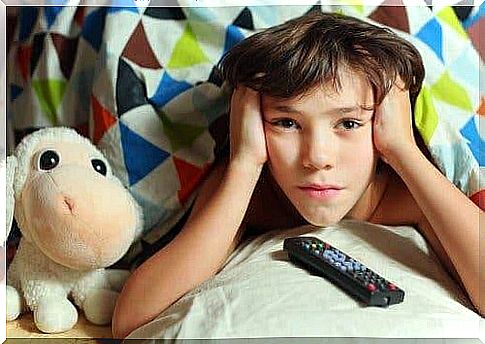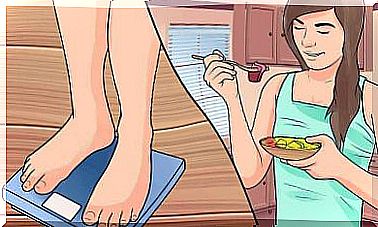How Do You Approach ADHD In An Effective Way?

Having a child with ADHD can be a daily challenge with frustrating and highly stressful moments. While it may seem difficult, some simple strategies can help give your child the best upbringing and education. Therefore, parents need to know how to approach ADHD in an effective way.
Normal household routines may not work if your child has ADHD. In addition, traditional teaching methods are not always effective. Therefore, parents and educators need to understand that children with this condition have different needs and responses.
We cannot expect a child with ADHD to change significantly. Rather, we must adapt to help our children with ADHD thrive.
Characteristics of children with ADHD
To approach ADHD effectively, we need to understand the characteristics of children with this condition. First, not all children with ADHD behave in the same way.
The symptoms that occur can vary in intensity and can even occur independently of each other. Most children with ADHD show only one of two groups of symptoms.
The three main features of ADHD are hyperactivity, attention deficit, and impulsivity. Each trait also has its own sub-symptoms which we will discuss below.
Hyperactivity
- Restlessness: Children with ADHD may have a hard time sitting still.
- Constantly talking, even when you shouldn’t.
- They keep making noises, even when they’re not talking.
- Difficulty relaxing.
- Start a new activity before the previous one is completed.
- Being bored easily.
Attention deficit

- Having trouble concentrating.
- Having trouble paying attention for a long time.
- Easily distracted by stimuli in their environment.
- Not paying attention to details.
- Tendency not to follow commands or instructions.
- They are sloppy and have trouble organizing tasks.
- Often they forget where they left things.
- They can change the subject in ways that don’t seem logical.
Impulsivity
- impatience.
- Children act impulsively, without thinking about what they are going to do.
- The tendency to interrupt the activities and conversations of others.
- Often reaching for an object that is within their reach.
- Responding in aggressive or dominant ways.
- Refusal to allow others to control or dominate them.
Furthermore, 70% of those with ADHD have other co-existing conditions. For example, anxiety, depression and post-traumatic stress disorder are all common.
Approaching ADHD Effectively: The Do’s and Don’ts
Some adjustments in the way parents interact with their children can have a very positive effect on behavior. It can also help them better manage situations that arise. At the same time, some techniques that work in traditional education can actually have negative effects in children with ADHD.
DO NOT use penalties

In most cases, when kids with ADHD ignore instructions or do something they shouldn’t, it’s because of distraction. In other words, it is not an act of rebellion or willful disobedience.
dr. Russell Barkley, a psychologist who specializes in ADHD, confirms that punishment is only a short-term solution. In the long run, children lose motivation to do what people ask of them. Yet they feel anger and frustration. They quickly forget the lesson and learn to be aggressive instead.
DO take advantage of entertainment and specific rewards
An Ohio University study found that entertainment and rewards provide positive reinforcement. If you want your kids with ADHD to do something specific, do it with them the first few times. Then congratulate them when they do it themselves.
DON’T improvise with the rules
Children with ADHD may find it difficult to understand and remember household rules and rules of behavior. It can take time to learn and master them, and it’s even harder when the rules change. Of course you will make mistakes along the way, but avoid constantly changing and adding new rules.
DO lay down clear rules and allow flexibility
Rules should be clear, simple and easy to follow. You can write them on a sheet of paper and place them in a visible place. Then remember that the learning process does not happen overnight.
- You must therefore be patient and flexible when it comes to accepting mistakes.
- Also remember to reward performance in some way and avoid punishment.
DO NOT individualize problems
If there’s a problem—your child with ADHD isn’t obeying or following instructions— resist the temptation to blame him. Don’t call him or her absent-minded or lazy.
Also, don’t reprimand them for what they did or didn’t do with phrases like “why didn’t you do this?” or “why did you do this?” It is more likely that your child will have no reason to care and will feel even more frustrated.
Work as a team if you want to approach ADHD in an effective way

Try not to blame your child. Rather, look for solutions together and invite your child to be part of the solution. Use expressions like, “We have a problem, how can we fix it?”
Have children suggest what actions to take and if they are right, reward them verbally. If they don’t give the best answer, don’t discourage them. Instead, guide them to an appropriate solution.
When you work with your child to resolve various negative behaviors, you create an environment where your child feels loved and supported despite his or her shortcomings, explains Carol Brady, a child psychologist.
DO NOT say no without thinking
Sometimes you need to say no, but it’s best to think before you just say no right away. Sometimes the response is a product of our own worries and desire for control rather than a real need. Therefore, it is best to ask yourself if there is another possible answer.
Another thing to consider is that kids with ADHD are prone to rebellion. This is understandable, as an excess of negative reactions encourages this type of behavior.
Say YES to Say No to Effectively Approach ADHD
If you’re sure the answer should be “no,” find a creative way to respond by using “yes.” That doesn’t mean you can never give a negative answer, but you should find a friendly way to do it.
Make a proposal and leave room for negotiation, which will motivate your child by helping him or her come up with a new proposal or come up with a different solution.
DO NOT be flexible with bedtime
Children with ADHD tend to have difficulty falling asleep. If they don’t get enough sleep, their hyperactivity and distractibility increase even further, as do other negative behaviors.
It makes sense to think that you should put them to sleep when they are tired. If you let them do that during the day, they won’t get enough sleep at night and therefore won’t get the rest their minds and bodies need. If they are tired before bedtime, find other activities to get their attention.
DO create a sleep routine
Creating a sleep routine is fundamental. Whether it’s a nap or bedtime, set a specific time to go to sleep. Turn off the lights, keep the house as peaceful as possible, and help your child fall asleep.
Avoid sweets, caffeinated drinks and other stimulants and turn off the TV. In short, think of a ritual before your child goes to bed.
Other Considerations for Effectively Approaching ADHD
Talk to your doctor about medication

If your child’s doctor recommends medication, you must be strict in administering it. Medications are very helpful when it comes to managing symptoms. If you have any doubts or concerns, discuss them with the doctor.
Create a solid exercise routine to effectively approach ADHD
Physical activities can help children with ADHD get rid of excess energy. In addition, it helps them concentrate and reduces their impulsivity.
Divide tasks into parts
Things that may seem simple to someone else can be a bigger struggle for kids with ADHD. That’s why it’s best to break tasks down into smaller activities that children can do more easily.
Help them create a written agenda of these activities and color them. That way, they’re easier to distinguish, so kids can check them off as individual tasks.
Limit distractions to effectively approach ADHD

Anything around children with ADHD can grab their attention. Create as many special spaces as possible for their activities and think about how you organize the space.
- Don’t put TV or video games in the room where they sleep or where they do their homework.
- Also, put away toys when it’s time to go to bed and turn off the TV when you eat.
Take breaks
Both children with ADHD and their parents should take breaks. Children with ADHD sometimes need to take a break in the middle of their activities so as not to get overwhelmed.
- It is also not good for children to be constantly dependent on their parents. They must learn to trust themselves.
- In addition, you occasionally need some free time to relax and not be weighed down by all the worries.
Hire a professional to effectively approach ADHD
Even if you think you can handle this on your own, recognize that you may need help. A psychologist who specializes in ADHD can provide tools and handles that will open up new opportunities and possibilities for your child.
You can also look into home help from specialized child carers. This allows you to rest and dedicate time to other activities and responsibilities, knowing that your child is in good hands.








